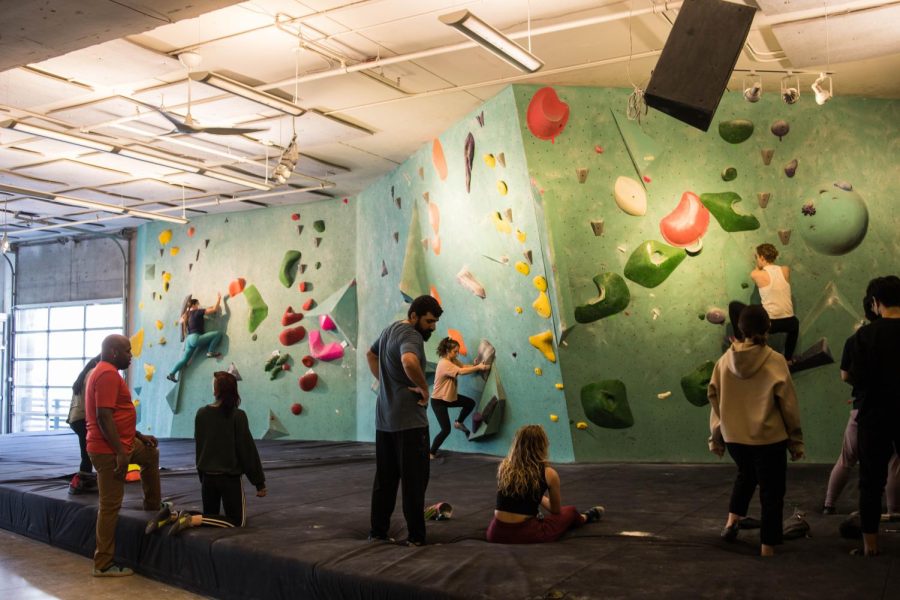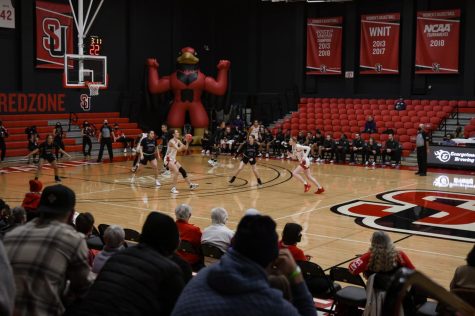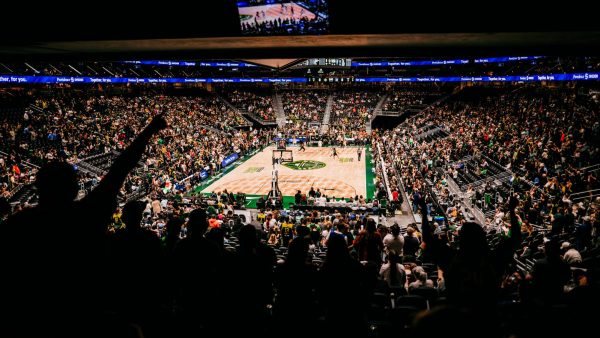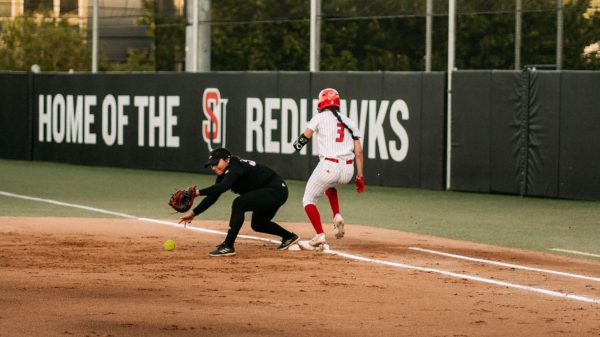Bouldering Gaining Popularity at Seattle U
Seattle Bouldering Project lower level.
An increasing number of Seattle University students are picking up bouldering as a hobby because many find it to be therapeutic, a good source of exercise and a way to relieve stress. Unlike outdoor rock climbing, the bouldering floor is cushioned, allowing for tolerable falls.
Bouldering is relatively modernized and has gained popularity over the last few years. It involves climbing up a wall around 12 to 15 feet high. There are also bouldering grades with levels based on abilities of climbers and their amount of experience.
Seattle U, First-year student, Connor Wong, an experienced climber who goes five times a week, explained the health benefits of bouldering.
“Climbing is always fun despite what’s going on in life,” Wong said. “If I’m stressed out, I go climbing and I’m only thinking about what’s on the wall. “It’s super physical and there’s something satisfying about it that isn’t tangible. It’s just that feeling of completion when you send a hard climb like solving a hard problem.”
Many Seattle U students go to the Seattle Bouldering Project (SBP) to exercise. SBP is located in the International District, around a 20 minute walk from campus.
SBP is a chain of climbing gyms across the United States that have developed a name for themselves in the ways that they set routes. They have robust facilities, consisting of bouldering equipment, training areas and an immense amount of routes. It can be crowded at times due to the sport’s surging popularity.
Second-year nursing student Sawyer Laine has been climbing for a few years and appreciates the consistent amount of new routes at SBP.
“The Seattle Bouldering Project is always changing up their routes so there are always new projects to try,” Laine said. “They also have a massive gym so you never get bored of doing the same ones.”
While bouldering is fairly pricey, Seattle U Recreation (UREC) has a partnership with the Seattle Bouldering Complex. They have a discounted membership available for students, saving Redhawks a decent amount of money.
The SBP has a five day pass available for students for $51.50 and at $100 for 10 days. Normally, the rate for a 10-day pass for students is $125. UREC sells passes and if you attend SBP with someone who has a pass, you get in free. However, free passes can only be used once per month.
From May 1 to May 10, the SBP is celebrating 10 years in operation. Chris Potts, the owner of SBP, shared that the complex was originally designed in 2011 for climbers to have more social interactions among individuals than other climbing gyms and experiences.
“The community at SBP is very supportive with strangers always willing to help you on a project or just cheering you on when you get to the top of something you were struggling with,” Laine said. “Everytime, you get stronger and do projects you previously couldn’t do.”
In North America, we use the V scale (Hueco System) in order to determine an individual’s bouldering or sport climbing skill level. Most beginner climbers are in the range of “v0-v2.” Climbers that reach v10 or higher in the double digits are commonly considered advanced.
Second-year nursing major Angela Su appreciated how the grades helped her learn how to climb.
“I like that you can choose your own difficulty because I feel like I am challenging myself to get better each time I go,” Su said. “I also like that it is a social sport. I often go with friends and we have a good time cheering each other on or helping one another figure out a route.”
Important attributes of elite boulderers are power, focused concentration and correct technique. All beginners need to start is a pair of climbing shoes and a bag of chalk to assist grip.
Training is rigorous and usually includes pull ups, hang-boarding and bouldering reps. Improving grip strength and building up tendon strength in the arms are vital for developing more advanced skills.
Su explained that watching how others complete routes helps one learn more of the technical side of climbing.
“I think you just have to go for it and try routes that seem challenging,” Su said. “Over time, as you gain more technical knowledge, you become better. It helps to observe how other people do a course or ask a more experienced friend to teach you new techniques.”
Wong explained consistent climbing is another way to improve.
“Training is a mixed bag of sorts,” Wong added. “In the beginning, you just have to climb more to improve technique but as you progress, strength and finger training are important. Climbing is definitely a sport where a lot of injuries happen. This is especially true while training, so proceed with caution.”
Bouldering is loved and practiced by many students at Seattle U but it is also gaining popularity across the United States and even globally. In 2021, bouldering was featured in the Tokyo Summer Olympics for the first time in history, an amazing milestone for the sport and boulderers worldwide.







![Josh Gibson Supplants Ty Cobb, Babe Ruth, as Baseball’s Best Hitter [OPINION]](https://seattlespectator.com/wp-content/uploads/2024/05/gettyimages-72075891-600x338.jpg)



